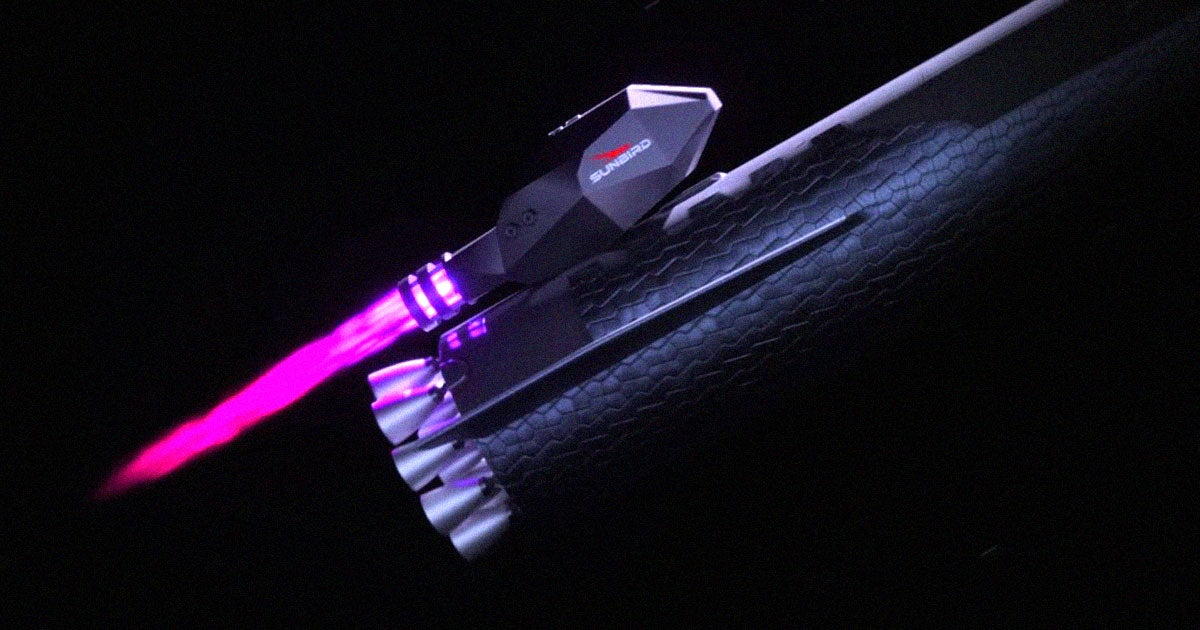Breakthrough: Nuclear Fusion Rocket Promises Faster Mars Missions
Technology
2025-04-06 15:15:01Content

In a groundbreaking leap for space exploration, British innovators at Pulsar Fusion are pushing the boundaries of interstellar travel with an audacious new concept: a nuclear fusion-powered rocket that could revolutionize how we journey through the cosmos. This cutting-edge design promises to transform science fiction into scientific reality, offering unprecedented potential for deep space exploration.
The startup's visionary approach harnesses the immense power of nuclear fusion—the same process that powers the sun—to create a rocket engine that could dramatically reduce travel times and overcome current limitations of space propulsion. By leveraging this advanced technology, Pulsar Fusion aims to unlock new frontiers of human space exploration, potentially bringing distant planets and far-reaching destinations within our technological grasp.
While the concept may sound like something from a futuristic movie, the team at Pulsar Fusion is serious about turning this bold vision into a tangible breakthrough that could reshape our understanding of space travel. As traditional rocket technologies reach their limits, this nuclear fusion concept represents a thrilling glimpse into the future of human space exploration.
Revolutionary Interstellar Propulsion: How Nuclear Fusion Could Redefine Space Travel
In the rapidly evolving landscape of space exploration, groundbreaking technological innovations continue to push the boundaries of human potential. As scientists and engineers relentlessly pursue more efficient and transformative methods of space travel, a new frontier of propulsion technology emerges, promising to revolutionize our understanding of interplanetary exploration.Breakthrough Rocket Technology Set to Slash Mars Travel Time and Redefine Space Exploration Limits
The Nuclear Fusion Frontier: Reimagining Space Propulsion
Nuclear fusion represents a quantum leap in rocket propulsion technology, offering unprecedented potential for transforming long-distance space travel. Unlike traditional chemical rockets that rely on combustible fuel, fusion-powered spacecraft harness the same fundamental energy processes that power stars, generating immense thrust with remarkable efficiency. The fundamental principle involves creating controlled nuclear reactions that release extraordinary amounts of energy, enabling spacecraft to achieve velocities previously considered impossible. Researchers have long recognized fusion's theoretical potential, but translating this concept into practical spacecraft design has remained an elusive challenge. The complex physics involved in maintaining stable fusion reactions while managing extreme temperatures and radiation presents multiple engineering obstacles that have historically prevented widespread implementation.Pulsar Fusion: Pioneering the Next Generation of Space Propulsion
British innovators at Pulsar Fusion are challenging conventional wisdom by developing a radical approach to nuclear fusion rocket design. Their conceptual framework represents a sophisticated integration of advanced plasma physics, cutting-edge materials science, and revolutionary propulsion engineering. By reimagining the fundamental architecture of space propulsion systems, these engineers are creating a blueprint for future interplanetary transportation. The proposed fusion rocket design goes beyond mere incremental improvements, representing a paradigm shift in how humanity conceptualizes space travel. By generating unprecedented levels of sustained thrust, these rockets could dramatically reduce travel times between planetary bodies, potentially transforming Mars missions from years-long expeditions to relatively short journeys.Technical Innovations Driving Fusion Rocket Development
At the core of Pulsar Fusion's breakthrough lies a complex array of technological innovations. Advanced magnetic containment systems create stable plasma environments capable of sustaining nuclear fusion reactions. Sophisticated cooling mechanisms prevent structural degradation under extreme thermal conditions, while precision-engineered magnetic nozzles direct energy output with unprecedented accuracy. The potential implications extend far beyond immediate space exploration objectives. Such technology could fundamentally reshape humanity's capacity to explore and potentially colonize distant planetary systems, opening unprecedented opportunities for scientific research and human expansion into the cosmos.Economic and Scientific Implications of Fusion Propulsion
Beyond technological marvel, fusion-powered rockets represent a potentially transformative economic opportunity. Reduced travel times and increased payload capacities could dramatically lower the cost of space missions, making interplanetary exploration more accessible. Scientific institutions and private aerospace companies are closely monitoring these developments, recognizing their potential to revolutionize space transportation infrastructure. The economic ripple effects could be substantial, potentially spawning entirely new industries focused on advanced propulsion technologies. As private and public sectors increasingly collaborate, fusion rocket research might become a critical driver of technological innovation and economic growth in the coming decades.Challenges and Future Outlook
Despite immense promise, significant challenges remain in realizing fusion rocket technology. Maintaining plasma stability, managing extreme radiation environments, and developing materials capable of withstanding unprecedented thermal and mechanical stresses represent ongoing engineering hurdles. Continued research, substantial financial investment, and interdisciplinary collaboration will be crucial in transforming these conceptual designs into operational spacecraft. Nonetheless, the trajectory of technological progress suggests that fusion-powered space travel is not a matter of if, but when. As computational capabilities increase and scientific understanding deepens, the once-theoretical concept of nuclear fusion propulsion inches closer to practical reality.RELATED NEWS
Technology

Siri's Leadership Breaks Silence: AI Stumbles Spark Internal Reckoning
2025-03-14 18:07:54
Technology

Netflix's Game-Changing Upgrade: Crystal Clear Streaming Comes to Your Living Room
2025-03-25 13:50:14
Technology

Nintendo's Next-Gen Switch: Voice Chat Revolution Arrives with Innovative 'C Button' Feature
2025-04-02 13:16:26




